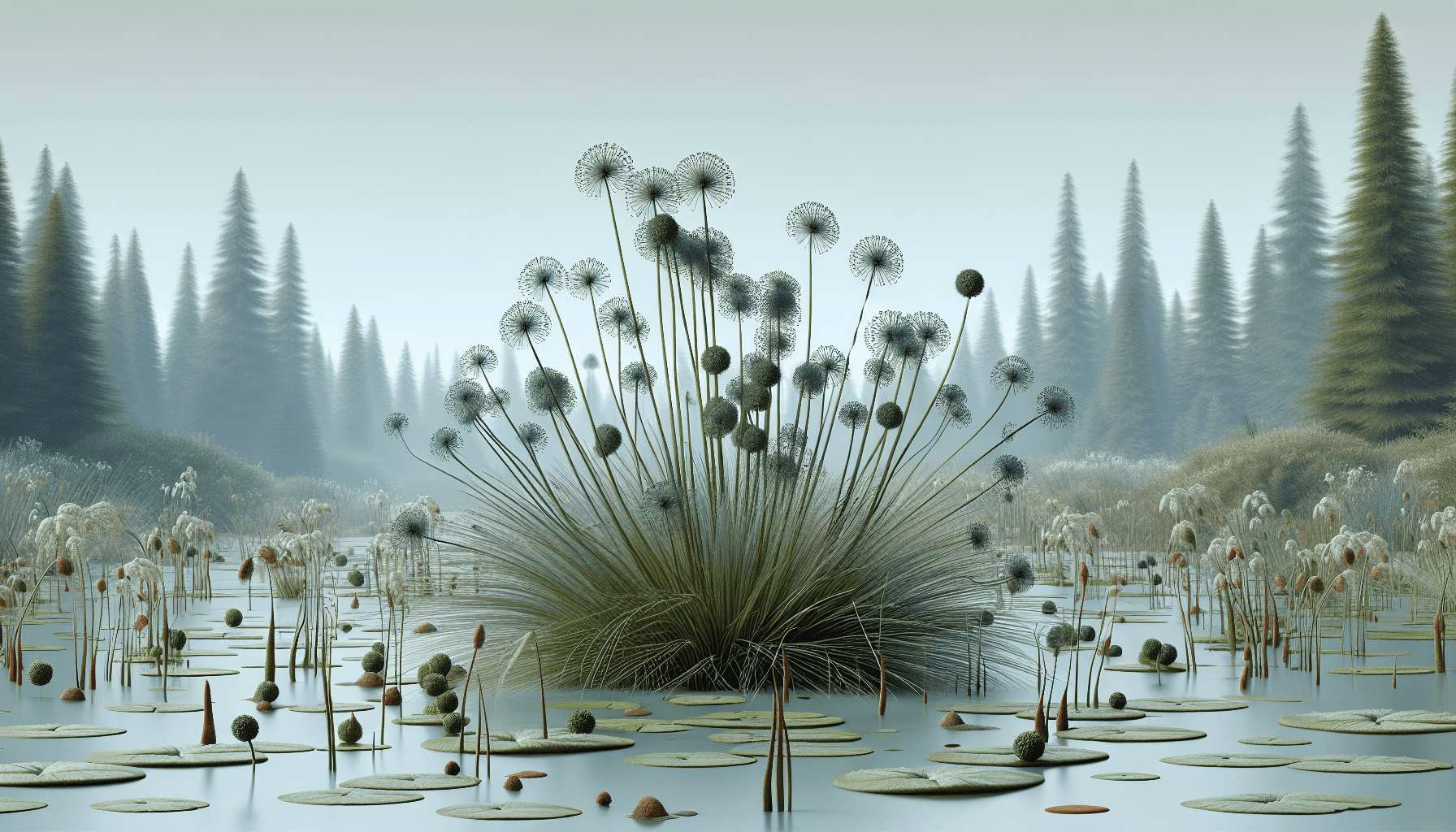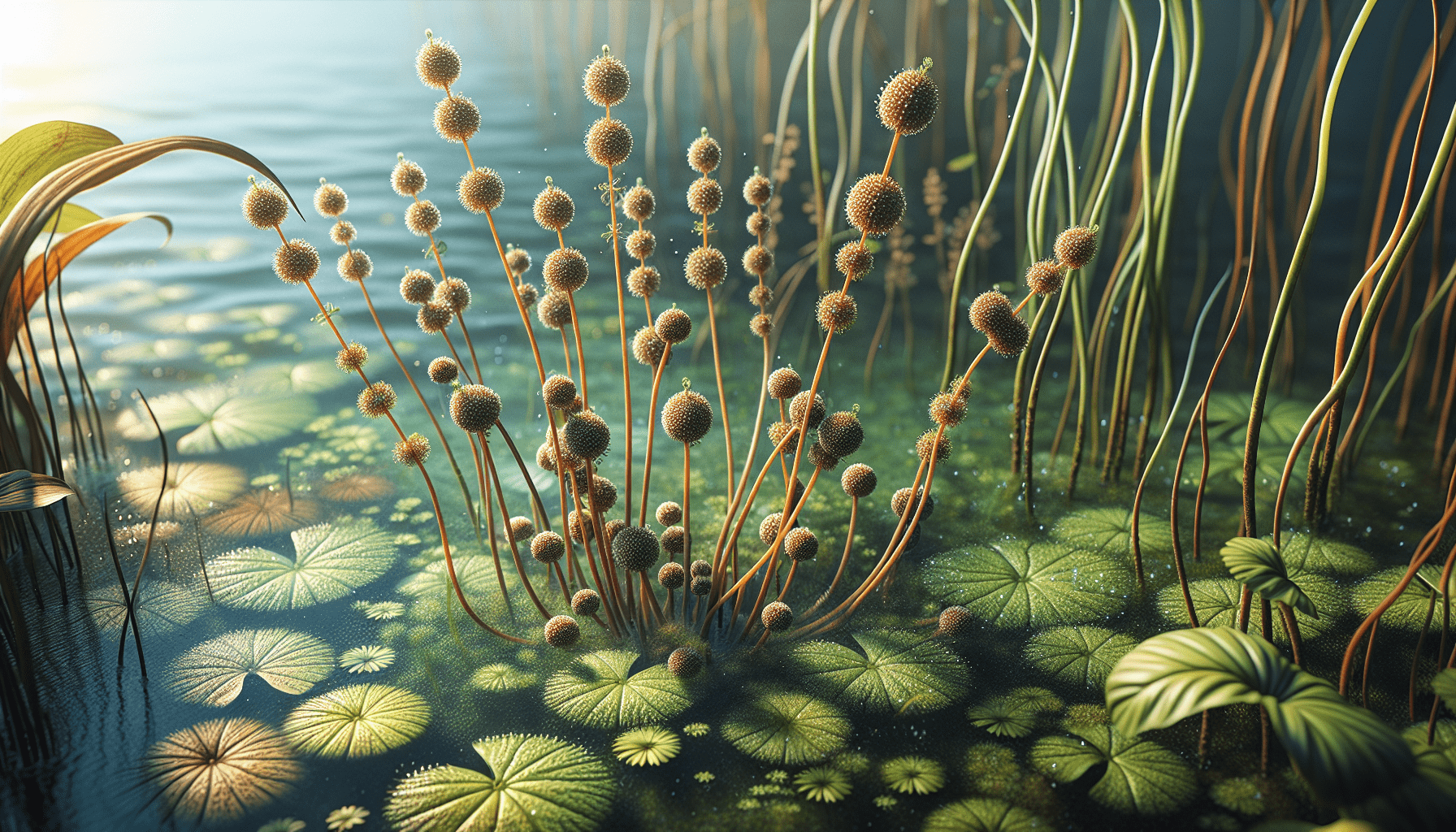In exploring the spectrum of aquatic ecology, you will inevitably discover the aquatic weed Pilularia Americana. This article focuses on unraveling the ecological function, distribution, and physiological characteristics of this particular aquatic weed. It seeks to induce a broader understanding of Pilularia Americana’s unique adaptation strategies and its role in sustaining fresh water ecosystems while also shedding light on its potential implications to human needs and environmental conservation efforts.

Overview of Pilularia Americana
Pilularia Americana, commonly known as American pillwort, belongs to the Marsileaceae family. This aquatic fern species is known for its cylindrical shape and dense, pill-like sporocarps. The sporocarps serve as the plant’s reproductive organ and aid in the efficient dispersal of spores that facilitate the proliferation of the species.
Basic information
As an aquatic plant, Pilularia Americana has evolved unique physiological mechanisms to thrive in its environment. This plant species is perennial, meaning that it can survive for more than two years. It is typically small, reaching up to 10 cm in height, but this varies across its geographic range. The leaves are typically narrow and long, resembling grass.
Habitat and distribution
Pilularia Americana can be found in many areas across North America. It is commonly seen in damp and wet habitats, particularly around the edges of streams, ponds, and lakes. During growing seasons, large colonies of Pilularia Americana can be observed in aquatic environments where water levels fluctuate.
Physical characteristics
The dark-green leaves of Pilularia Americana commonly reach a height of 5 cm, growing directly from a small corm. The corm is an elongated, fleshy plant stem that functions as a storage organ and aids in the survival of the plant during harsh environmental conditions.
Scientific Classification of Pilularia Americana
Pilularia Americana is a part of the expansive tree of life and shares certain characteristics with a wide array of plants, allowing it to be grouped into the same categories.
Kingdom
Pilularia Americana belongs to the Plantae kingdom, which comprises all green plants.
Phylum
Within this kingdom, Pilularia Americana falls under the Pteridophyta phylum, which consists of ferns and their allies.
Class
Pilularia Americana is classified under Polypodiopsida, a class that encompasses true ferns.
Order
It shares the order, Salviniales, with other water ferns.
Family
This plant is part of the Marsileaceae family, which includes small, aquatic ferns.
Genus
The genus to which Pilularia Americana belongs is Pilularia, which includes pillworts.
Species
The species name is Americana, which frequently marks a species native to America.
Lifecycle of Pilularia Americana
Pilularia Americana, similar to other ferns, follows a unique lifecycle involving both asexual and sexual reproduction. This lifecycle is characterized by two distinctive stages: the sporophyte stage and the gametophyte stage.
The reproduction process
During the sporophyte stage, the plant produces spores, facilitated by the sporocarps, resistant structures that allow for long-distance dispersal. These spores germinate to form the gametophyte stage, wherein the structure can produce both male and female reproductive cells (gametes). When water is available, the male gametes swim to the female gametes to facilitate fertilization, leading to the development of new sporophyte plants.
Growth and development stages
The sporophyte plants grow into mature Pilularia Americana, bearing the characteristic cylindrical shape and producing sporocarps once again, thus completing the lifecycle. This cyclical process allows Pilularia Americana to regenerate and proliferate in its habitat over time.
Lifecycle duration and factors affecting it
Like other fern species, the lifecycle duration of Pilularia Americana can range from a year to many years, depending on the environmental conditions. The growth and reproduction of these plants are significantly influenced by humidity, temperature, and the availability of light and nutrients.

Habitat and Ecological Adaptations of Pilularia Americana
Pilularia Americana exhibits a set of characteristics that allow it to survive and thrive in specific habitats. Understanding these adaptations provides insight into how the species interacts with and contributes to its ecosystem.
Preferred habitat
Pilularia Americana is commonly found in aquatic and semi-aquatic environments. It prefers habitats with fluctuating water levels, including the edges of ponds, lakes, and streams.
Temperature and light requirements
Pilularia Americana is a temperate plant that can withstand a range of temperatures and grow under both full sun and partial shade.
Soil and water conditions
Pilularia Americana can grow in both sandy and loamy soils, with a preference for acidic, neutral, and basic (alkaline) soils. In terms of water, the plant requires wet soil or standing water and can tolerate occasional flooding.
Survival and spread mechanisms
Pilularia Americana possesses survival mechanisms that enable it to regrow after periods of stress or adversity. Its sporocarps can remain dormant for many years, waiting for the right conditions to germinate. The plant can also spread via its rhizomes, which can grow into a new plant if detached.
Importance of Pilularia Americana in the Ecosystem
Pilularia Americana plays a substantial role in the ecosystems where it is found, contributing to biodiversity and ecological balance.
Role in the food chain
As an aquatic plant, Pilularia Americana provides a source of food and habitat for a variety of organisms, from insects to waterfowl. It forms the base of the food chain in many aquatic ecosystems.
Contribution to biodiversity
By providing a unique ecological niche, Pilularia Americana contributes to the biodiversity of the habitats where it is found. Its ability to survive across a range of conditions allows it to support diverse ecosystems.
Importance in the water ecosystem
Pilularia Americana plays a vital role in maintaining the health of aquatic environments. It helps regulate water conditions, filtering out pollutants and preventing erosion by stabilizing the soil with its root system.
Uses of Pilularia Americana
Though it’s known as a weed due to its rapid growth, there are uses of this plant, including medicinal, industrial, and gardening purposes.
Use in traditional medicine
Traditionally, certain ferns, including Pilularia Americana, have been used in medicine for their potential anti-inflammatory and antiviral properties.
Potential industrial applications
The unique characteristics of Pilularia Americana render it potentially useful in a variety of industrial applications. For instance, its resilient aquatic nature makes it a possible candidate for use in wastewater treatment facilities.
Use in landscaping and gardening
Pilularia Americana’s visually appealing, grass-like structure has garnered attention for potential use in landscaping and gardening applications, especially in water gardens or as part of ‘green’ roofs.
Challenges Posed by Pilularia Americana
While Pilularia Americana can offer benefits, it can also present some challenges. The rapid and extensive growth of this plant can lead to problems, especially in areas where it is not native.
Invasive characteristics
If introduced to a non-native ecosystem, Pilularia Americana’s rapid growth and ability to quickly spread can lead it to outcompete native plants, disrupting local ecosystems and decreasing biodiversity.
Impact on water bodies
Excessive growth of Pilularia Americana can lead to the clogging of waterways and potential negative impacts on water quality. This can harm aquatic organisms and potentially impede human activities like boating or fishing.
Methods to control and precautions to take
The invasive characteristics of Pilularia Americana necessitate controls and precautions to prevent its spread. Physical removal, chemical treatment, and biological control using specific insect species are strategies that have been employed to control the growth and spread of this plant.
Pilularia Americana from a Botanical perspective
Pilularia Americana offers a fascinating study for botanists, given its unique physical structures and lifecycle.
Study of the physical structure
The physical structure of Pilularia Americana, from its cylindrical, grass-like leaves to its sporocarps, provides a valuable area of study that can offer insights into the botanical world.
Monitoring of growth and reproduction
The life cycle and reproductive process of Pilularia Americana is distinctive and presents a unique aspect of fern biology to study.
Research and uses in botany
The study of Pilularia Americana can have broad implications for research in fields such as plant physiology, ecology, and evolutionary biology. Furthermore, understanding its growth characteristics might help in the development of strategies for the effective control of this and similar species.
Conservation Status of Pilularia Americana
Despite its potential to become invasive in certain situations, Pilularia Americana is also at risk in many parts of its natural range due to habitat loss and changes in water quality.
Threats to the species
Pilularia Americana faces threats from habitat destruction resulting from urban development, agricultural expansion, and changes to waterways. Additionally, changes in water quality due to pollution can also impact its survival.
Conservation efforts and measures required
Conservation efforts for Pilularia Americana mostly involve habitat protection and restoration, along with monitoring populations of the species. Continued research on this species is critical for developing effective conservation strategies.
Role of regulatory bodies
Regulatory bodies play an important role in the conservation of Pilularia Americana by enforcing laws and regulations designed to protect wetlands and other habitats where the species is found. They also coordinate and fund research and conservation projects.
Interesting Facts about Pilularia Americana
Fascinating and intriguing facts about Pilularia Americana underscore the plant’s distinctiveness and importance.
Unique characteristics
Pilularia Americana’s most notable characteristic is its sporocarps. These structures, unique among ferns, contribute to the plant’s survival and proliferation, as they enable the fern’s spores to withstand harsh conditions and travel long distances.
Trivia and record statistics
In the world of ferns, Pilularia Americana is rather small, reaching maximum heights of about 10 cm. However, its impact on its habitat is anything but small, thanks to its effective reproductive mechanisms and ability to withstand varying conditions.
Cultural and historical significance
While Pilularia Americana may lack direct cultural or historical significance, it represents an integral part of the wetland and aquatic ecosystems to which it naturally belongs. Appreciating the role of plants like Pilularia Americana thus contributes to a broader understanding and respect for botanical diversity and the intricate web of life on our planet.